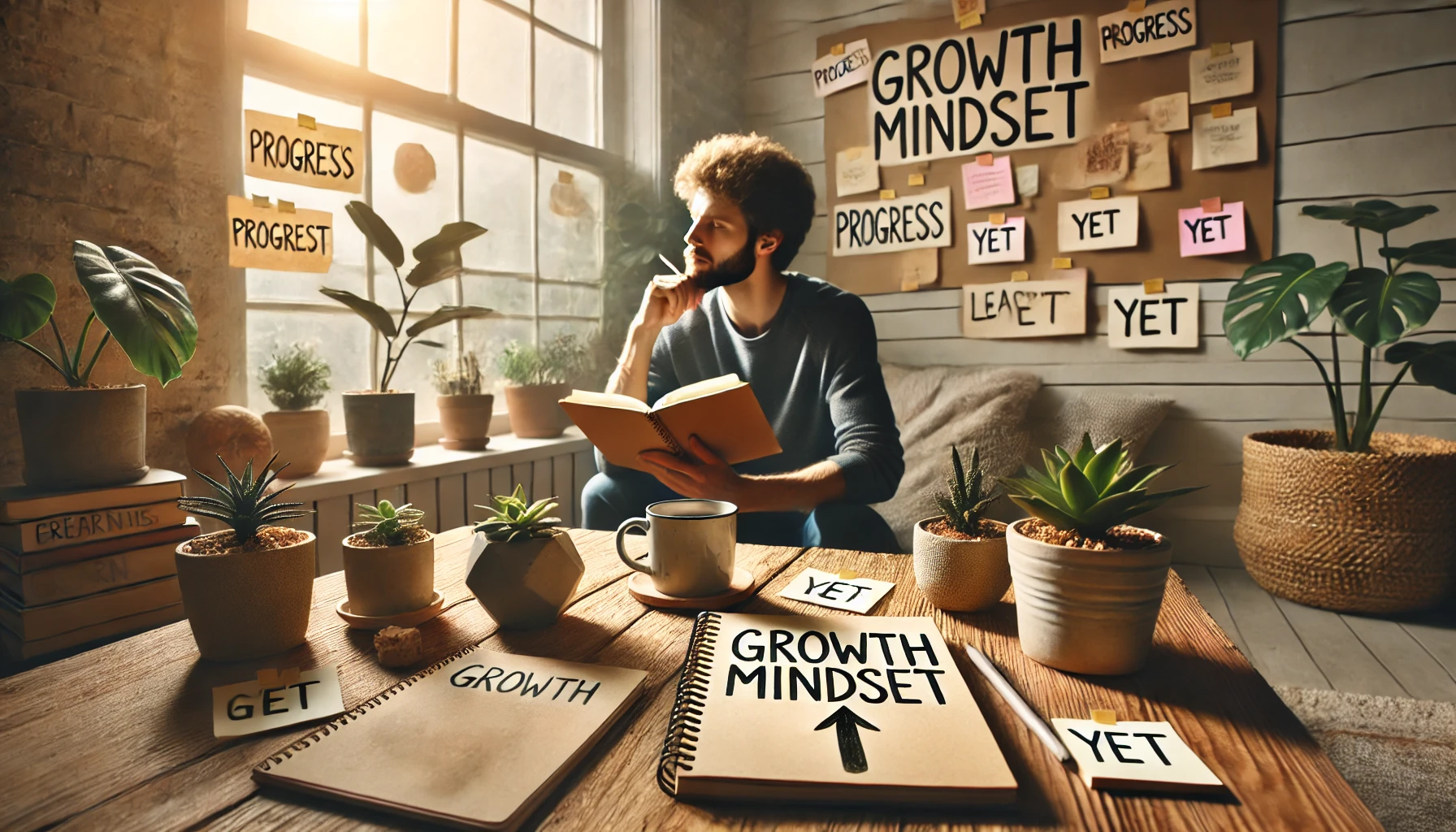Some people seem naturally confident, adaptable, and persistent. But it’s not luck or talent—it’s mindset.
More specifically, it’s a growth mindset: the belief that your skills and intelligence can be developed with effort, learning, and time.
And the best part? You can build this mindset, starting today.
Let’s explore how to apply a growth mindset in your everyday life—so you can grow through what you go through.
1. Understand the Growth vs. Fixed Mindset
Psychologist Carol Dweck defined the difference:
- Fixed mindset: “I’m either good at this or I’m not.”
- Growth mindset: “I can improve with practice.”
Fixed Mindset Sounds Like:
- “I failed = I’m a failure.”
- “I’m not smart enough.”
- “This is too hard.”
Growth Mindset Sounds Like:
- “Failure is how I learn.”
- “I can figure this out.”
- “Challenge = opportunity to grow.”
This shift changes everything.
2. Catch Yourself in Fixed Thinking
Your brain loves patterns—and fixed thoughts often happen automatically.
Awareness Questions:
- “Am I assuming I can’t improve?”
- “Am I avoiding this because it’s hard?”
- “Would I say this to a friend—or am I being harsh on myself?”
Naming the thought = first step to changing it.
3. Replace “I Can’t” With “I’m Learning To”
Language shapes mindset. Shift your internal dialogue.
Instead of:
- “I’m not good at this.”
Say: “I’m learning how to do this.” - “I always mess this up.”
Say: “I’m figuring it out—one step at a time.”
Progress lives in your vocabulary.
4. Seek Challenges, Not Comfort Zones
Growth doesn’t happen where it’s easy. It happens where it’s uncomfortable but doable.
Try:
- Saying yes to something that feels slightly out of reach
- Learning a new skill just for fun
- Asking for feedback (even if it’s hard)
- Trying again after a failure
Stretch > stay safe.
5. Reflect on Setbacks With Curiosity
Failure is not proof you can’t—it’s data on how you could.
After a Mistake, Ask:
- What can I learn from this?
- What would I do differently next time?
- What part of this was actually progress?
Reflection turns pain into power.
6. Praise Effort, Not Just Outcomes
In a growth mindset, the process matters more than the result.
Practice:
- Celebrate consistency
- Praise hard work, patience, problem-solving
- Notice and track improvement—not just wins
This rewires your brain to value effort over ego.
7. Surround Yourself With a Growth Environment
Mindset is contagious. Be around people who encourage learning, effort, and resilience.
Growth Spaces Might Include:
- A mastermind or support group
- Podcasts, books, or creators who share their learning process
- Friends who remind you: you’re growing, not failing
Environment shapes identity.
8. Use the Word “Yet”
A small word with huge power.
Instead of:
- “I don’t understand this.”
Try: “I don’t understand this… yet.” - “I can’t do that.”
Try: “I can’t do that… yet.”
“Yet” opens the door to growth.
9. Track Your Growth Over Time
Your brain forgets how far you’ve come. Remind it.
Try This:
- Weekly journal: “What did I learn this week?”
- List 3 ways you’ve improved in the past 3 months
- Revisit old projects or habits—you’ll see progress
Growth is slow—but it’s real.
Growth Is a Daily Choice
You don’t need to be naturally talented, fearless, or perfect.
You just need to keep learning. Keep trying. Keep growing.
Because your potential isn’t fixed—it’s unfolding.
And your mindset? It’s the soil where your future takes root.
